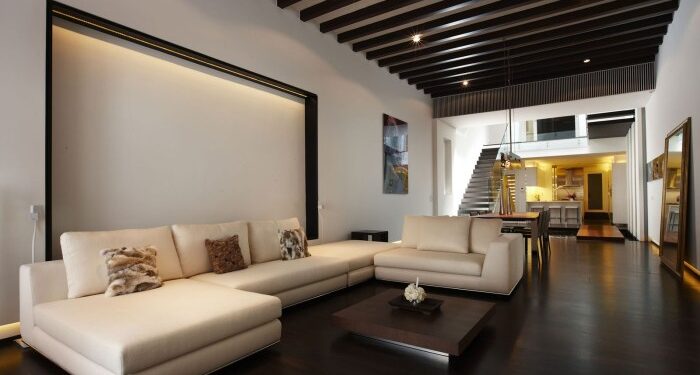Embark on a journey through the intricate world of interior architecture, where creativity meets functionality to shape our living spaces. From iconic projects to sustainable design principles, this topic delves deep into the heart of architectural innovation.
Discover the fundamental elements that define interior architecture and how they come together to create visually stunning and purposeful interiors.
. Designers may draw inspiration from both approaches to create unique and dynamic interior spaces that resonate with the needs and preferences of today's users.
Introduction to Interior Architecture
Interior architecture is the art and science of designing and enhancing interior spaces to achieve a healthier and more aesthetically pleasing environment. It focuses on the structural elements of a building's interior, such as layout, flow, and spatial organization, to optimize functionality and create a cohesive design scheme.Interior architecture is closely related to interior design, but whereas interior design primarily deals with the decorative aspects of a space, interior architecture involves the more technical and structural aspects of design. Interior architects work to create spaces that are not only visually appealing but also functional, safe, and sustainable.One of the key roles of interior architects is to consider how people will interact with a space and to design environments that promote well-being and productivity. By understanding the needs and behaviors of the end users, interior architects can create spaces that are tailored to meet specific requirements and enhance the overall quality of life for those who inhabit them.Some famous interior architecture projects around the world include the Guggenheim Museum in Bilbao, Spain, designed by Frank Gehry, the Sydney Opera House in Australia, designed by Jørn Utzon, and the Fallingwater house in Pennsylvania, USA, designed by Frank Lloyd Wright. These projects showcase the transformative power of interior architecture in creating iconic and innovative spaces that have a lasting impact on the built environment.Elements of Interior Architecture
Interior architecture encompasses various key elements that work together to create functional and aesthetically pleasing spaces. These elements include spatial planning, materials, lighting, and furniture, all of which play a crucial role in shaping the overall design.Spatial Planning
Spatial planning is fundamental in interior architecture as it involves organizing and arranging the layout of a space to optimize functionality and flow. Designers carefully consider factors such as circulation, zoning, and proportions to ensure that the space is utilized efficiently.Materials
Materials play a vital role in interior architecture, as they not only contribute to the visual appeal but also affect the tactile experience of a space. From wood and metal to glass and textiles, the choice of materials can significantly impact the overall look and feel of a design.Lighting
Lighting is a key element that can transform the mood and ambiance of a space. Interior architects utilize different lighting techniques to enhance the architectural features, create focal points, and establish the desired atmosphere within a room.Furniture
Furniture is an essential component of interior architecture, as it serves both functional and aesthetic purposes. Designers carefully select furniture pieces that complement the overall design concept while providing comfort and usability to the occupants.Color, Texture, and Form
In addition to the fundamental elements, interior architecture also leverages color, texture, and form to enrich a space. These elements are used strategically to create visual interest, evoke emotions, and establish a cohesive design language throughout the interior.Sustainability and Eco-Friendly Design
With a growing emphasis on environmental consciousness, sustainability has become a significant consideration in interior architecture. Designers are increasingly incorporating eco-friendly materials, energy-efficient systems, and sustainable practices to minimize the environmental impact of their projects.Traditional vs. Modern Trends
While traditional interior architecture principles focus on timeless design elements and historical influences, modern trends often embrace innovation, technology, and contemporary aestheticsSpatial Planning and Layout
In interior architecture, spatial planning refers to the process of organizing and arranging a space to best suit its function and the needs of its users. It involves carefully considering the flow of movement, the placement of furniture and fixtures, and the overall layout to optimize the use of space.Innovative Spatial Layouts
- Open Concept Living: Removing walls to create a seamless flow between different areas such as the living room, dining room, and kitchen.
- Flexible Workspaces: Designing office spaces that can easily adapt to different work styles and activities.
- Vertical Living: Maximizing vertical space in small apartments by incorporating features like loft beds and storage solutions.
Technology in Spatial Planning
Virtual Reality (VR) and Augmented Reality (AR) are increasingly being used in interior architecture to visualize and plan spaces before construction begins. Designers can create virtual models of rooms and test different layouts and furniture arrangements to find the most efficient and effective design.Impact on User Experience
- Well-being: A well-planned spatial layout can enhance the overall sense of well-being for occupants by promoting comfort, functionality, and a sense of flow within the space.
- User Interaction: The layout of a space can influence how users interact with their environment, affecting their mood, productivity, and overall experience.
- Accessibility: Proper spatial planning ensures that a space is easily navigable and usable for individuals of all abilities, contributing to a more inclusive environment.
Materials and Finishes
Materials and finishes play a crucial role in interior architecture, as they not only contribute to the aesthetics of a space but also impact its functionality. The choice of materials can significantly influence the mood, style, and overall design of an interior environment.Sustainable Materials in Modern Interior Architecture
One of the key considerations in contemporary interior architecture is the use of sustainable materials. These eco-friendly options not only reduce the environmental impact of a project but also promote a healthier indoor environment. Examples of sustainable materials include reclaimed wood, bamboo, recycled glass, and low-VOC paints.Creative Use of Materials in Iconic Projects
- The Guggenheim Museum in Bilbao, designed by Frank Gehry, is a prime example of using titanium panels to create a visually striking and innovative exterior.
- The Sagrada Familia in Barcelona, envisioned by Antoni Gaudí, showcases the creative use of colorful mosaic tiles and intricate stone carvings to enhance the interior spaces.
- The Burj Al Arab in Dubai features a luxurious interior with a stunning atrium clad in gold leaf, showcasing the opulent use of materials to create a lavish ambiance.















